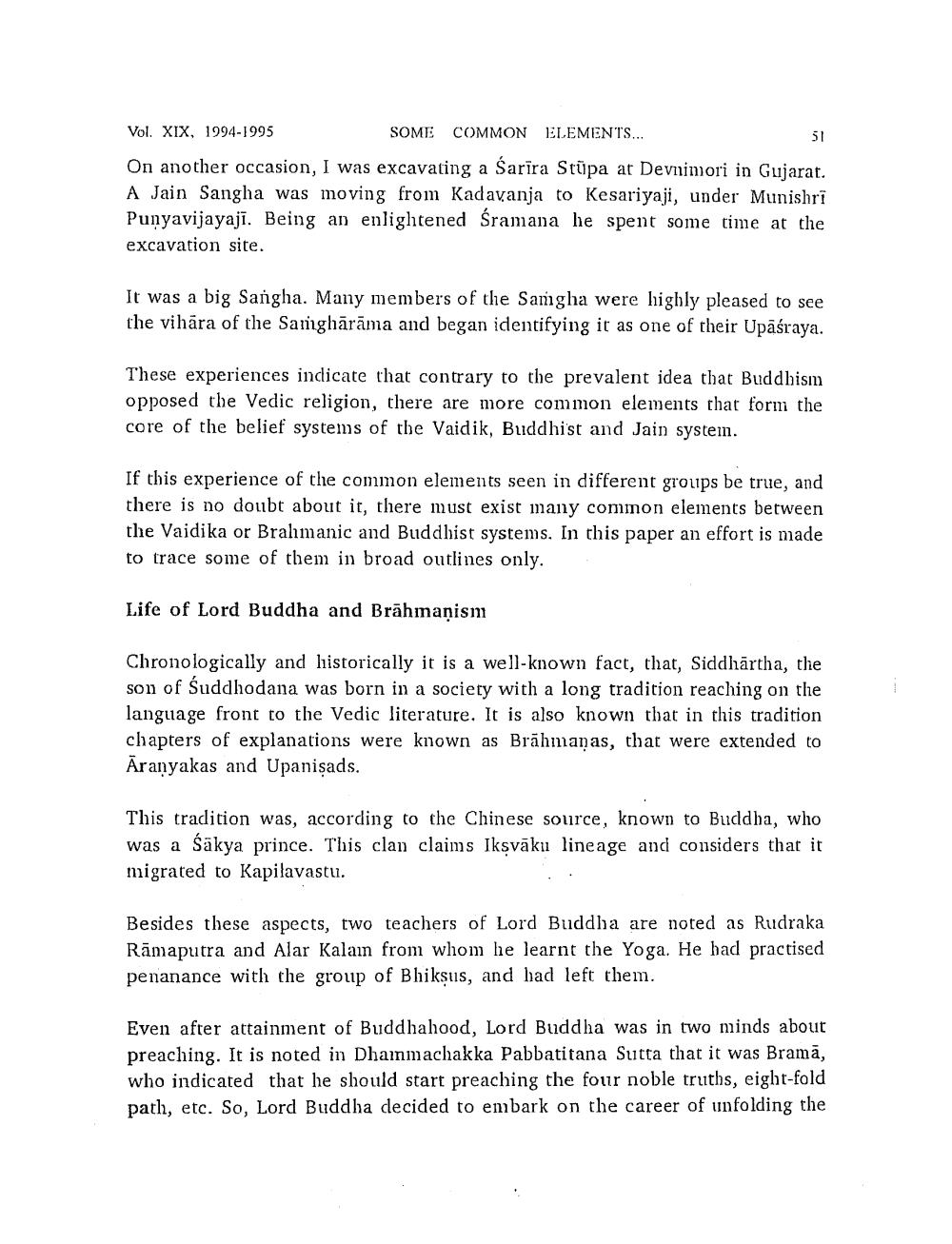________________
Vol. XIX, 1994-1995
SOME COMMON ELEMENTS...
On another occasion, I was excavating a Sarira Stupa at Devnimori in Gujarat. A Jain Sangha was moving from Kadavanja to Kesariyajt, under Munishrī Punyavijayaji. Being an enlightened Śramana he spent some time at the
excavation site.
51
It was a big Sangha. Many members of the Samgha were highly pleased to see the vihara of the Samgharama and began identifying it as one of their Upäśraya.
These experiences indicate that contrary to the prevalent idea that Buddhism opposed the Vedic religion, there are more common elements that form the core of the belief systems of the Vaidik, Buddhist and Jain system.
If this experience of the common elements seen in different groups be true, and there is no doubt about it, there must exist many common elements between the Vaidika or Brahmanic and Buddhist systems. In this paper an effort is made to trace some of them in broad outlines only.
Life of Lord Buddha and Brāhmaṇism
Chronologically and historically it is a well-known fact, that, Siddhartha, the son of Suddhodana was born in a society with a long tradition reaching on the language front to the Vedic literature. It is also known that in this tradition chapters of explanations were known as Brahmanas, that were extended to Aranyakas and Upanisads.
This tradition was, according to the Chinese source, known to Buddha, who was a Sakya prince. This clan claims Iksvaku lineage and considers that it migrated to Kapilavastu.
Besides these aspects, two teachers of Lord Buddha are noted as Rudraka Ramaputra and Alar Kalam from whom he learnt the Yoga. He had practised penanance with the group of Bhiksus, and had left them.
Even after attainment of Buddhahood, Lord Buddha was in two minds about preaching. It is noted in Dhammachakka Pabbatitana Sutta that it was Bramā, who indicated that he should start preaching the four noble truths, eight-fold path, etc. So, Lord Buddha decided to embark on the career of unfolding the




